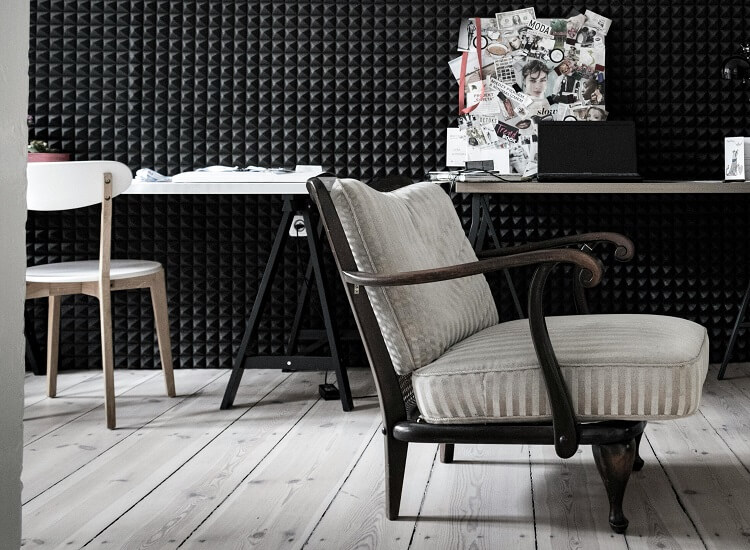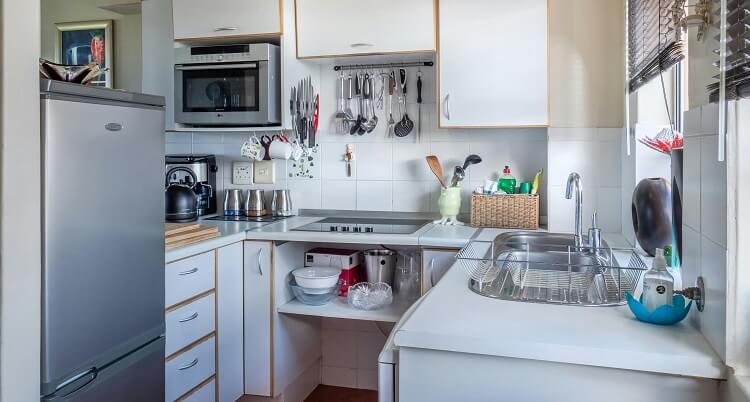
Creating a soundproof living room involves addressing noise sources, using sound-absorbing materials, and implementing smart design strategies. Noise, whether it’s traffic, neighbors, or internal echoes, can significantly impact your daily life. A soundproofed living room not only offers peace and tranquility but enhances your quality of life, improving relaxation, focus, and overall well-being.
This comprehensive guide will show you how can you effectively soundproof a living room using practical, affordable, and effective methods.
Why Soundproofing Your Living Room Matters
Reducing noise in your living room isn’t just about convenience; it’s about improving your overall well-being. Constant noise pollution can contribute to stress, fatigue, and difficulty concentrating. A quieter space fosters better focus, deeper relaxation, and allows you to truly enjoy your leisure time or work from home effectively.
While a bedroom is primarily for rest and sleep, the living room is a multifunctional space for entertainment, relaxation, and socializing. How can you effectively soundproof a living room to accommodate these diverse activities? By tailoring your soundproofing strategies to address the specific needs of this dynamic environment.
Enhanced entertainment experiences are another key benefit. Soundproofing improves the acoustics of your media setup for a more immersive experience while preventing sound from disturbing your neighbors. Furthermore, a soundproofed living room provides greater privacy for conversations and personal activities.
Beyond personal comfort, soundproofing can also increase the value of your property, making it a desirable feature for potential buyers.
Identify Noise Sources in Your Living Room
The first step in effectively soundproofing your living room is pinpointing the origins of the noise. Noise can be external (traffic, construction, neighborhood activities) or internal (echoes, sounds from other rooms, appliances). Observe how sound enters your space during peak noise times.
Carefully examine windows, doors, walls, and floors for potential weak points like gaps, cracks, or thin materials. Testing surfaces by tapping or inspecting for loose seals can also help identify problem areas. Addressing these specific noise sources allows for a targeted and effective soundproofing approach.
Walls: Building a Strong Sound Barrier
Adding Mass and Absorption
Walls are often the primary pathway for noise transmission.
Installing acoustic panels made of absorptive materials like mineral wool or fiberglass helps to reduce reflections and reverberations within the room. For a more robust solution, consider adding mass-loaded vinyl (MLV), a dense, flexible material that effectively blocks sound transmission. Products like Acoustimac Mass Loaded Vinyl are highly effective.
Sealing any gaps and cracks with acoustic caulk, such as Green Glue Noiseproofing Sealant, can further minimize sound leakage.
Drywall and Dampening
For significant noise issues, adding a second layer of drywall with a viscoelastic sound-dampening compound, like Green Glue Damping Compound, sandwiched in between offers enhanced soundproofing. This combination adds mass and dissipates sound energy, creating a highly effective sound barrier.
Ceilings: Stop Noise from Above
Acoustic Ceiling Tiles
Ceilings are a common source of noise infiltration, especially in apartments or multi-story homes. Installing acoustic ceiling tiles, such as Armstrong Optima Ceiling Tiles, is a relatively straightforward solution that absorbs sound and enhances aesthetics.
These tiles are designed to absorb sound waves, reducing noise transmission from the floor above.
Resilient Channels and Drop Ceilings
Resilient channels, like the Auralex RC-8 Resilient Channel, installed between the ceiling joists, decouple the ceiling drywall from the structure, interrupting sound transmission and dampening vibrations. For a more polished look and superior soundproofing, consider installing a drop ceiling with sound-absorbing panels like CertainTeed Gyptone BIG Curve Tiles. These systems provide a significant reduction in noise transfer.
Floors: Minimizing Impact Noise
Rugs and Underlayment
Hard flooring surfaces tend to amplify noise.
Thick rugs or carpets with a dense pile add comfort and absorb impact noise while reducing echoes. For added effectiveness, consider placing rubber mats or cork underlayment beneath the flooring to further block sound transmission. Products like FloorMuffler Underlayment are specifically designed for this purpose.
Floating Floors
Floating floors, while requiring professional installation, offer maximum noise reduction.
These floors are not directly attached to the subfloor, creating a separation that effectively minimizes impact and airborne noise transmission. Look into options like Lumber Liquidators’ Dream Home XD Laminate, which has built-in sound dampening qualities.
Windows: Addressing External Noise
Double or Triple Glazing
Windows are a major entry point for external noise. Upgrading to double or triple-glazed windows with laminated glass can significantly reduce noise transmission.
Brands like Andersen and Pella offer high-quality soundproofing windows.
Soundproof Curtains and Window Inserts
If window replacement isn’t feasible, soundproof curtains made of dense fabrics like velvet or blackout materials can be an effective alternative. These curtains absorb sound waves and block external noise. Consider brands like Nicetown or Deconovo.
Window inserts, like Indow Window Inserts, provide a secondary layer of glazing, further reducing noise transmission.
Weatherstripping
Sealing gaps around windows with weatherstripping, such as Frost King Rubber Weatherseal Tape, prevents noise from leaking through cracks, maintaining a quieter indoor environment.
Doors: Seal the Gaps
Solid-Core Doors and Door Sweeps
Doors, especially hollow-core ones, are often weak points in soundproofing. Upgrading to solid-core doors significantly increases noise reduction due to their density. Adding a door sweep at the bottom seals the gap between the door and the floor.
Consider products like the Pemko Automatic Door Bottom.
Acoustic Seals and Soundproofing Blankets
Installing acoustic seals around the door frame creates a tighter barrier against noise. Products like Zero International’s door seals are effective options. For a temporary and more budget-friendly solution, hanging a soundproofing blanket, such as the Moving Blankets Soundproofing Blanket, over the door can provide effective noise reduction.
FAQ
What is the most cost-effective way to soundproof a living room?
Adding thick rugs, soundproof curtains, and sealing gaps around windows and doors with weatherstripping are the most affordable solutions that can make a noticeable difference.
Do soundproof curtains really work?
Yes, soundproof curtains can reduce noise by absorbing sound waves and blocking external sounds.
However, they are most effective when combined with other soundproofing methods like sealing gaps and addressing wall and ceiling noise.
Can I soundproof a living room without professional help?
Absolutely! Many DIY solutions like installing acoustic panels, weatherstripping, adding rugs, and hanging soundproof curtains can be implemented with basic tools and readily available materials.
How much does it cost to fully soundproof a living room?
Costs vary depending on the chosen materials and methods. DIY options may cost a few hundred dollars, while professional installations involving methods like double drywall or floating floors can range from $1,000 to $5,000 or more depending on the size of the room and the complexity of the project.
How do I soundproof against loud music from neighbors?
Addressing wall noise is crucial in this situation.
Adding mass-loaded vinyl to the shared wall, combined with double drywall and a damping compound, offers the best solution. Sealing any gaps or cracks in the wall is also essential. If the noise is transmitting through the floor or ceiling, address those areas with the methods outlined above.
Will soundproofing affect my home’s ventilation?
Soundproofing itself does not block airflow if done correctly.
Ensure proper ventilation by using acoustic vents that allow for airflow while minimizing noise leakage, or by maintaining small, strategically placed and sealed gaps for air circulation. Always prioritize adequate ventilation when implementing soundproofing measures.
Conclusion
Soundproofing your living room is an investment in your comfort, well-being, and the overall functionality of your home. By strategically addressing walls, windows, floors, ceilings, and doors, you can significantly reduce unwanted noise and create a more peaceful and enjoyable living environment.
Start with simple, budget-friendly solutions like adding rugs, sealing gaps, or hanging soundproof curtains. For more significant noise reduction, consider combining multiple methods tailored to your specific needs and budget. Whether you opt for DIY solutions or professional installation, transforming your living room into a tranquil sanctuary is within reach.
Start taking steps today to create the quieter, more relaxing home environment you deserve.






